


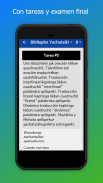
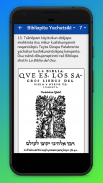
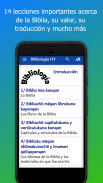
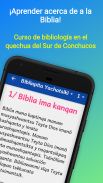
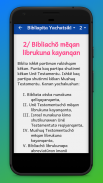
Bible Intro ConchucosS Quechua

Descrição de Bible Intro ConchucosS Quechua
Course on Introduction to the Bible in South Conchucos Quechua, Ancash and Huánuco, Peru [qxo]
Course objectives:
• Provide a basic understanding of the Bible, including its origen, its value, its history, and its major divisions.
• Explain specialized terms such as inspiration, the canon, the Pentateuch, the Septuagint, the deuterocanonical books, the apocriphal books, the pseudoepigraphal books, etc.
• Discover how the Bible came to be translated into Spanish and who were the principal actors in the process.
• Become familiar with different types of translation and learn the advantages and disadvantages of each.
The course requires fifteen hours of instruction. It includes eight homework assignments which the student should complete outside of class. It also includes a final exam.
The instructor should encourage the students to read the Bible texts and lesson points in class out loud, in this way helping them obtain fluency in the public reading of Scripture.
Contents:
1/ The Bible
2/ The books of the Bible
3/ Chapters and verses of the Bible
4/ The languages and materials of the Bible
5/ The Septuagint and the Vulgate
6/ The first translations into Spanish
7/ The Reina Valera
8/ Other translations
9/ Interlinear, literal and dynamic translation
10/ Another lesson on the word of God (its necessity, its permanence, and five ways to take it in)
11/ The canon
12/ The deuterocanonical and apocryphal books
13/ How people learned the Bible in the times of Jesus
14/ Comparing manuscripts
15/ Exam
Instead of preparing this course in Spanish or in English and then later translating it into Quechua, we have prepared it entirely in Quechua from the ground up, employing natural language and thought patterns so that it might be readily understandable to Quechua speakers. Our hope is that they might not only learn the material in their own language, but also familiarize themselves with how to speak about the Bible in their mother tongue.





















